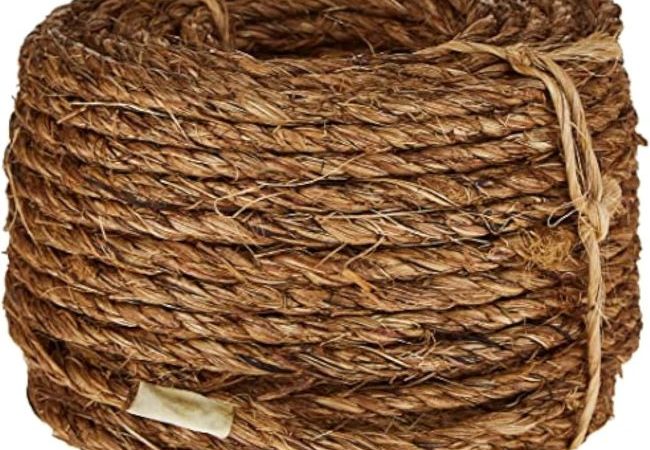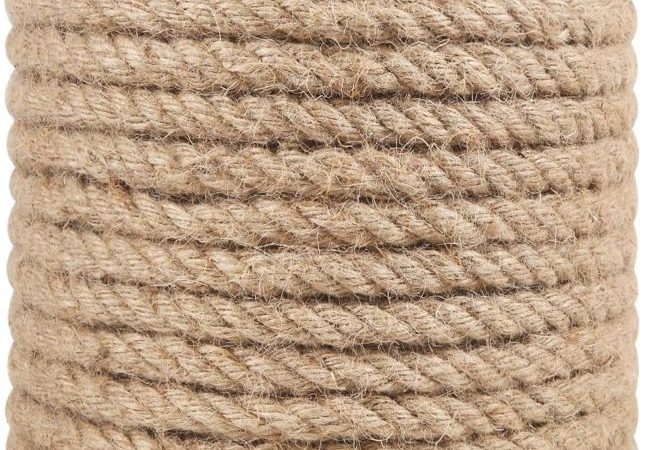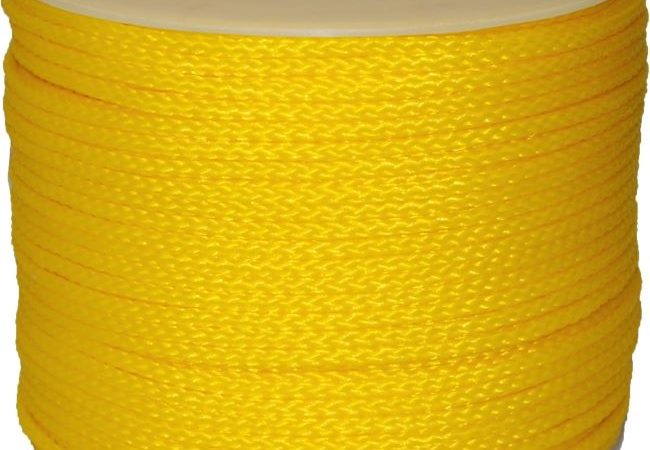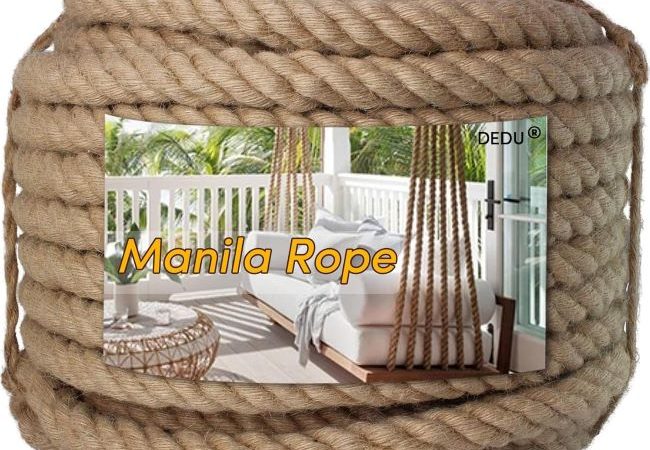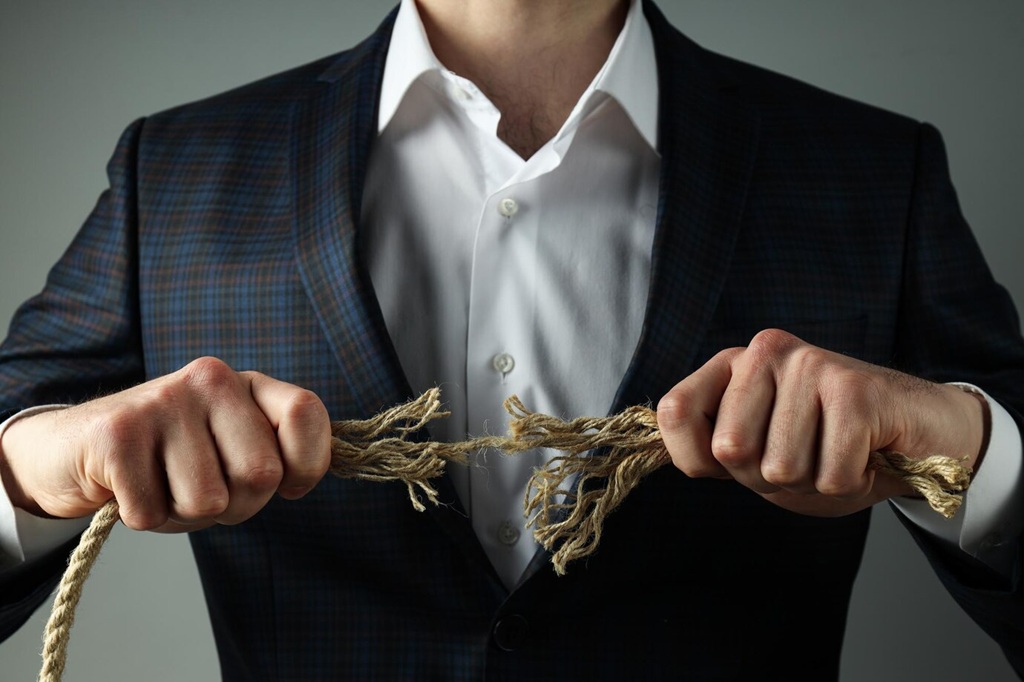
How Strong is Coconut Rope? Unearthing the Strength and Versatility of Coir
Imagine a sun-drenched tropical beach, palm trees swaying, and the humble coconut lying beneath. For centuries, this versatile fruit has provided food, water, and shelter. But hidden within its tough, fibrous husk lies another treasure: coir fiber, the raw material for coconut rope. Often seen in gardens, landscaping projects, and coastal settings, coconut rope (or coir rope) has a rustic charm and eco-friendly appeal. But beyond its natural aesthetics, a crucial question arises for practical applications: just how strong is coconut rope?
Contents at a Glance
ToggleCoconut rope has a rich history, intertwined with maritime exploration and traditional crafts across coastal communities, particularly in India, Sri Lanka, and Southeast Asia. Early Austronesian and Polynesian navigators skillfully used coir rope to lash together planks for their ocean-faring canoes, demonstrating its historical significance and inherent capabilities. Today, while synthetic ropes dominate many heavy-duty industries, coconut rope continues to hold its own in various niches. This article delves into the true strength of coconut rope, exploring the factors that influence it, its unique properties, diverse applications, and how it compares to other options, offering a comprehensive guide for anyone considering this natural wonder.
What Exactly is Coconut Rope (Coir Rope)?
Coconut rope is derived from coir, the natural fiber extracted from the fibrous layer (mesocarp) found between the hard, internal shell and the outer coat of a coconut. The process begins with harvesting coconuts, typically after they have matured for optimal fiber strength (for brown coir) or slightly earlier (for white coir).
The husks are separated from the nut and then undergo a crucial process called retting. This involves soaking the husks in water – traditionally saltwater for white coir and freshwater for brown coir – for several weeks, or even months. Retting allows microorganisms to break down the pithy tissues surrounding the fibers, making them easier to extract. After retting, the softened husks are beaten (manually or mechanically) to separate the long, strong fibers from the shorter, dust-like pith. These fibers are then washed, dried thoroughly (often in the shade to maintain quality), and cleaned.
Finally, the cleaned coir fibers are spun into yarn. This yarn can then be twisted together to form ropes of varying thickness and strength. Typically, coir rope is available as:
- Coir Twine: A lighter, often single-ply or lightly twisted yarn, suitable for gardening ties, crafts, and light bundling.
- Coir Rope: Usually 2-ply or 3-ply (or more), where multiple strands of coir yarn are twisted together to create a much stronger and more durable rope.
The distinction between brown and white coir is important. Brown coir, from fully mature coconuts, contains more lignin (a complex polymer that makes cell walls rigid), resulting in thicker, stronger, more abrasion-resistant fibers ideal for doormats, brushes, and heavier ropes. White coir, from unripe green coconuts, has less lignin but more cellulose, making it finer, softer, and more flexible, though less strong. White coir is often preferred for spinning into finer yarns used in fishing nets and lighter ropes.
Decoding the Strength: Just How Tough is Coir Rope?
When we talk about rope strength, we usually refer to its tensile strength or breaking strength – the maximum load it can withstand before snapping under tension. Coconut rope possesses a respectable strength, particularly for a natural fiber, but it’s essential to understand its context and limitations.
-
Tensile Strength & Breaking Load:
The actual breaking strength of coconut rope varies significantly based on several factors. A thin coir twine might have a breaking strength of only around 100 pounds (as seen in some retail products), while thicker, well-constructed ropes (e.g., 18-20mm diameter) made from high-quality brown coir, possibly treated, can potentially support loads upwards of 500 kg (over 1100 lbs). However, coir rope is generally considered less strong in pure tensile load compared to Manila rope (from Abaca fibers) or most synthetic ropes like nylon or polyester. Where coir excels among natural fibers is its toughness – its ability to absorb energy and resist fracture, partly due to its lignin content. Studies involving coir fiber in concrete reinforcement highlight this toughness.
-
Key Factors Influencing Strength:
- Fiber Quality & Type: Brown coir generally yields stronger rope than white coir. The maturity of the coconut, growing conditions, and processing methods (retting, cleaning) significantly impact fiber quality.
- Rope Diameter: Unsurprisingly, thicker ropes are stronger than thinner ones. Strength increases substantially with diameter.
- Construction (Ply & Twist): The number of yarn strands (ply) twisted together and the tightness of the twist directly influence the rope’s integrity and breaking strength. A tightly spun, multi-ply rope distributes load more effectively.
- Moisture Content: Coir is highly absorbent. While resistant to saltwater degradation, getting wet can sometimes cause natural fiber ropes like coir to shrink slightly and potentially lose some strength or become stiffer. This shrinkage can also make knots tighten and become difficult to undo.
- Treatments: Some coir ropes are treated (e.g., with oils or chemicals) to enhance durability, pest resistance, and potentially strength, especially for demanding outdoor or marine applications. Untreated rope is more natural but may degrade faster under constant stress or harsh conditions.
-
Strength in Comparison:
- Vs. Cotton: Coir is significantly stronger and more durable than cotton rope, which is soft but weak and degrades quickly when wet.
- Vs. Jute/Sisal: Comparisons here are nuanced. Some sources suggest coir is less strong than jute or sisal in pure tensile tests due to its lower elasticity. However, coir’s durability, especially its resistance to rot and saltwater, often surpasses jute and sisal in specific environments. Jute rope generally exhibits higher tensile strength.
- Vs. Manila: Manila rope is generally considered the strongest of the common natural fiber ropes and outperforms coir in tensile strength.
- Vs. Synthetic Ropes (Nylon, Polyester, Polypropylene): Synthetic ropes offer significantly higher tensile strength, greater consistency, better UV resistance (often), and lower moisture absorption than coir rope. For heavy lifting or safety-critical applications, synthetics are usually preferred. However, coir wins on biodegradability and sustainability.
More Than Just Muscle: The Unique Properties of Coconut Rope
While its strength is moderate compared to some alternatives, coconut rope boasts a unique combination of properties that make it highly valuable for specific uses:
- Saltwater Champion: This is arguably coir’s standout feature among natural fibers. It possesses remarkable resistance to degradation from saltwater and microbial attack. This makes it exceptionally well-suited for marine environments where other natural ropes would quickly rot. Historically, this property made it indispensable for boat rigging and fishing nets in coastal regions.
- Durability & Weathering: Coir is naturally durable and resistant to abrasion due to its tough fibers. While untreated coir will eventually break down when exposed to the elements (which is good for biodegradability), it holds up reasonably well outdoors, especially thicker ropes or treated varieties. It has moderate resistance to UV rays but prolonged direct sunlight can weaken it over time.
- Buoyancy & Water Interaction: Coconut rope floats, which is advantageous for marine applications like mooring lines or fishing nets. It’s also highly absorbent, capable of holding significant amounts of water – a benefit in horticulture for keeping plant roots moist, but potentially a drawback if weight increase is an issue.
- Eco-Credentials: As a 100% natural product derived from a renewable resource (coconut husks, often a byproduct), coir rope is fully biodegradable and compostable. Choosing coir over synthetic ropes helps reduce plastic pollution and reliance on fossil fuels, making it an excellent sustainable choice.
- Handling & Texture: Coir rope has a distinctly rough, bristly texture, which provides excellent grip, even when wet. However, it’s also relatively stiff and less flexible than ropes made from fibers like cotton or even hemp, making it slightly harder to knot and handle in some situations.
Related: From Tropical Shores to Your Garden: The Enduring Versatility of Coconut Coir Rope
Where Coconut Rope Makes its Mark: Common Applications
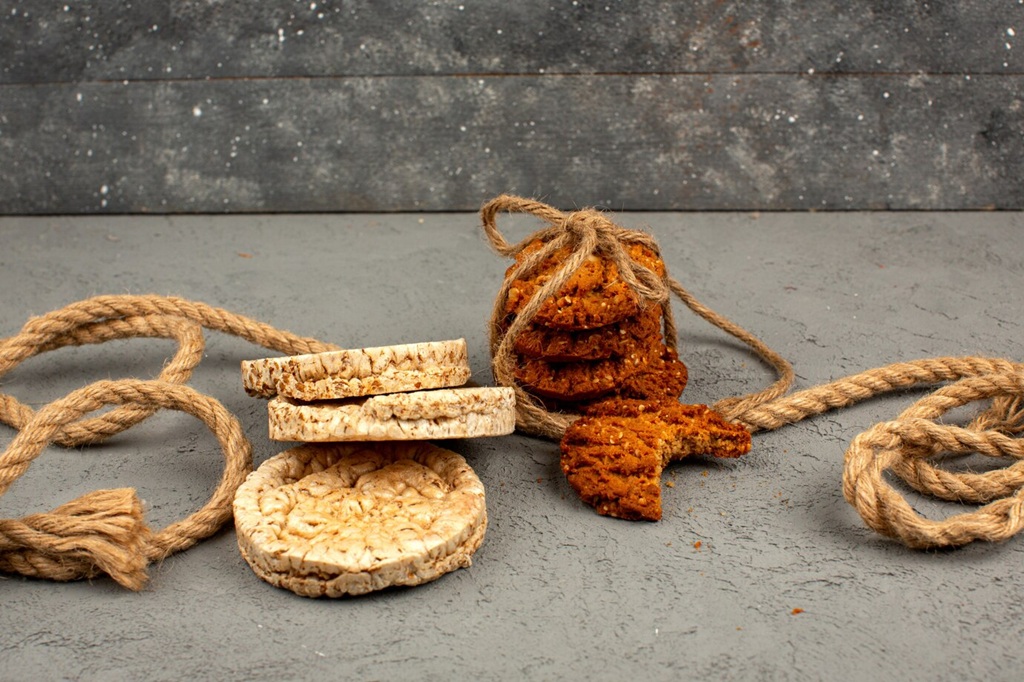
Thanks to its unique blend of strength, durability, and natural properties, coconut rope finds use in a surprisingly wide array of applications:
- Marine & Fishing: Its saltwater resistance makes it ideal for traditional fishing nets, mooring lines for small boats, crab and lobster pot lines, and particularly in aquaculture for growing mussels, oysters, and sea squirts, where its rough texture provides an excellent substrate for larvae to attach.
- Agriculture & Horticulture: Widely used for tying and supporting plants (famously for training hops vines), creating trellises, securing young trees, lining hanging baskets (retains moisture), and making biodegradable plant pots. Its use avoids chemical leaching associated with some synthetic materials. Oil-treated coir twine is even used as a natural fencing deterrent for pests.
- Erosion Control & Landscaping: Coir ropes, nets, and logs (densely packed coir fiber in tubular netting) are key components in bioengineering and landscaping for stabilizing soil on slopes, riverbanks, and construction sites. They help prevent erosion while allowing vegetation to establish, eventually biodegrading into the soil.
- Construction & Traditional Crafts: Historically used for lashing structural elements in buildings and boats. Today, it’s used in eco-friendly construction for binding, light scaffolding ties (use with caution and knowledge of load limits), and for its aesthetic appeal. It’s also popular for making durable doormats, floor coverings, rugs, brushes, baskets, and various decorative craft items.
- Other Uses: Includes creating natural-looking garden edging, building animal bedding or pet toys (due to its toughness), use in DIY projects, sustainable packaging solutions, and even as clotheslines.
Choosing and Caring for Your Coconut Rope
To get the most out of coconut rope, consider these points:
- Selection Tips: Choose the rope diameter and ply based on your needs. For heavy-duty tasks like securing substantial garden structures or marine use, opt for thicker, multi-ply ropes. For simple garden ties or crafts, thinner twine may suffice. Consider if the enhanced durability of treated rope is necessary for your application versus the pure natural state of untreated rope. Always assess the expected load versus the rope’s likely breaking strength – err on the side of caution.
- Maintenance: To prolong its life, especially in outdoor or marine settings, rinse the rope with fresh water occasionally to remove salt, dirt, and debris. Store coir rope in a cool, dry, shaded place when not in use to protect it from prolonged UV exposure and moisture saturation, which can accelerate degradation. Regularly inspect the rope for signs of fraying, thinning, or damage, especially if it’s used for load-bearing purposes.
- Important Considerations: Understand that coconut rope, like all natural fiber ropes, has variability in strength and will degrade over time. It is generally not recommended for critical life-safety applications such as climbing, overhead lifting of heavy objects, or situations where failure could cause serious injury or damage. Its strength, while good for many tasks, is not comparable to engineered synthetic ropes designed for high-load, high-risk scenarios.
Related: Decoding the Workhorse: What is the Most Commonly Used Wire Rope?
People Also Ask (FAQs)
Q1: Is coconut rope stronger than nylon rope?
A: No, nylon rope has significantly higher tensile strength, abrasion resistance, and elasticity compared to coconut rope. Coconut rope is strong for a natural fiber but cannot match the performance of most synthetic ropes like nylon or polyester in demanding applications.
Q2: Is coconut rope waterproof?
A: Coconut rope is not waterproof, in fact, it’s highly absorbent. However, it is highly resistant to damage from water, especially saltwater, unlike many other natural fibers that rot quickly when wet. It maintains its structural integrity well in damp conditions but will absorb water and become heavier.
Q3: How long does coconut rope last?
A: The lifespan depends heavily on the thickness, quality, whether it’s treated, and the conditions it’s exposed to. Used indoors for crafts, it can last indefinitely. Outdoors, for gardening ties, it might last one to three seasons before biodegrading. Thicker ropes used for landscaping or marine purposes might last several years, especially if maintained properly. Constant high tension, abrasion, or extreme weather will shorten its lifespan.
Q4: Can coconut rope be used for a garden swing?
A: While historically used for swings, using coconut rope for swings today requires extreme caution. A very thick, high-quality coir rope might be strong enough for a child’s swing if properly installed and regularly inspected, but its strength is variable and degrades over time. Synthetic ropes specifically designed for playground equipment are a much safer choice due to their predictable strength and durability.
Q5: Is coir rope expensive?
A: Coir rope is generally quite affordable, often less expensive than other natural ropes like Manila or hemp, and significantly cheaper than high-performance synthetic ropes. Its cost-effectiveness, combined with its eco-friendly nature, makes it an attractive option for many applications where extreme strength isn’t the primary requirement.
Conclusion
So, how strong is coconut rope? The answer is nuanced. It possesses good strength and remarkable toughness for a natural fiber, rooted in the resilient structure of coir derived from coconut husks. While it doesn’t compete with the sheer tensile power of synthetic ropes or even top-tier natural ropes like Manila, its unique superpower lies in its exceptional resistance to saltwater and decay, coupled with its inherent durability and eco-friendliness.
From securing ancient ocean canoes to stabilizing modern shorelines, supporting agricultural growth, and adding rustic charm to homes and gardens, coconut rope has proven its worth across centuries and diverse applications. Its strength is sufficient for a multitude of tasks, provided its limitations are understood and respected. As we increasingly seek sustainable and natural materials, the humble coconut rope, born from a tropical fruit’s protective husk, stands out as a versatile, affordable, and environmentally responsible choice that masterfully blends tradition with practical utility.

